Counter-Strike Source Overview
Counter-Strike: Source is a first-person shooter video game that holds a significant place in the history of online gaming. Developed by Valve Corporation and released in 2004, it is a remake of the original Counter-Strike using the Source engine, which brought enhanced graphics, physics, and gameplay mechanics to the franchise. The game retains the core gameplay elements of its predecessor: two teams, terrorists and counter-terrorists, battle each other in various objective-based scenarios.
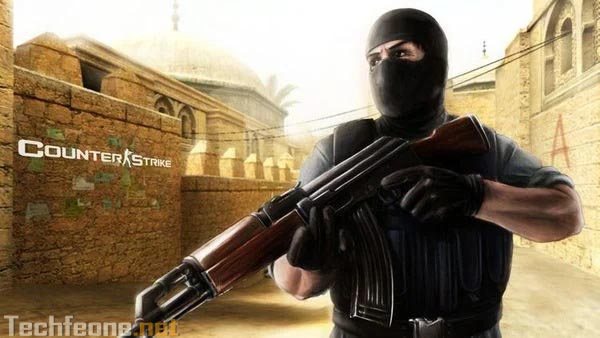
CS: Source, a prominent title in the world of first-person shooters, seamlessly fused the nostalgia of the original “Counter-Strike” with cutting-edge advancements of the Source engine. With a dynamic blend of classic gameplay modes and updated aesthetics, it brought forth a compelling experience for both veterans and newcomers.
The game retained its fundamental premise of intense battles between Terrorists and Counter-Terrorists across various meticulously designed maps. Strategic thinking, precise aim, and teamwork remained paramount for success. However, the visual overhaul was undeniable, as the Source engine breathed life into environments with improved textures, lighting, and realistic physics interactions. Breaking glass, manipulating objects, and utilizing the environment as cover added layers of immersion.
“Counter-Strike: Source” found its strength in its online multiplayer, facilitating global competition and camaraderie. The multiplayer ecosystem was enriched by the inclusion of user-generated content and mods, expanding the game’s longevity through custom maps and inventive game modes.
Beyond the pixelated gunfights, CS: Source wasn’t just a game; it was a thriving community. Players honed their skills, navigated ranks, and engaged in heated rivalries. Steam integration further streamlined the experience, fostering a sense of interconnectedness among players.
In essence, “Counter-Strike: Source” wasn’t merely an updated iteration; it was a modern homage to a legendary game that solidified its status as a staple in the FPS genre, bridging the gap between classic gameplay and contemporary advancements.
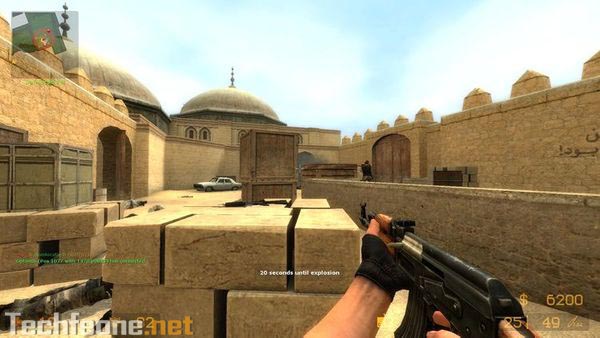
Game features
- Game Modes: “Counter-Strike: Source” features several game modes, with the most popular being “Bomb Defusal” and “Hostage Rescue.” In “Bomb Defusal,” one team tries to plant a bomb at designated bomb sites, while the other team attempts to prevent it and defuse any planted bombs. In “Hostage Rescue,” one team rescues hostages being held by the other team.
- Teams: The game features two opposing teams: Terrorists and Counter-Terrorists. Each team has its own set of weapons, equipment, and objectives.
- Weapons and Equipment: The game offers a variety of weapons, ranging from pistols and rifles to sniper rifles and heavy machine guns. Players can also buy armor, grenades, and other equipment using in-game currency earned during matches.
- Graphics: “Counter-Strike: Source” brought updated graphics to the franchise using the Source engine. The game features improved textures, lighting, and physics, resulting in a more realistic and immersive visual experience compared to the original game.
- Physics Engine: The Source engine introduced realistic physics to the game, allowing for more dynamic interactions with the environment. Players could use objects as cover, break glass, and interact with various elements in the game world.
- Map Variety: The game features a mix of classic maps from the original “Counter-Strike” and new maps designed specifically for “Counter-Strike: Source.” These maps provide diverse settings and strategic options for players.
- Online Multiplayer: CS: Source is primarily an online multiplayer game. Players can connect to various servers and engage in matches with players from around the world.
- Modding Support: Like many Source engine games, “Counter-Strike: Source” supports user-generated content and modding. This has led to the creation of numerous custom maps, game modes, and modifications that add new gameplay experiences to the game.
- Community and Competitiveness: The game has a strong competitive scene, with players participating in tournaments and leagues. The ranking system encourages players to improve their skills and climb the ranks by winning matches and earning experience points.
- Steam Integration: CS Source was one of the early games to use Valve’s digital distribution platform, Steam. This allowed players to easily install, update, and manage the game, as well as connect with friends and join multiplayer matches.
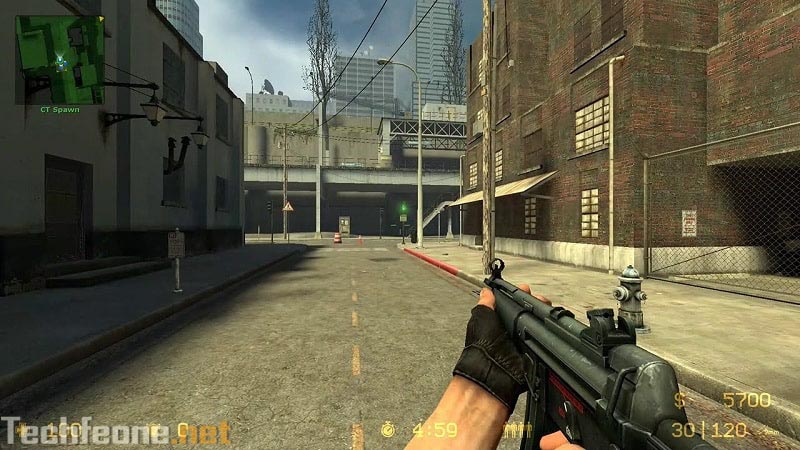
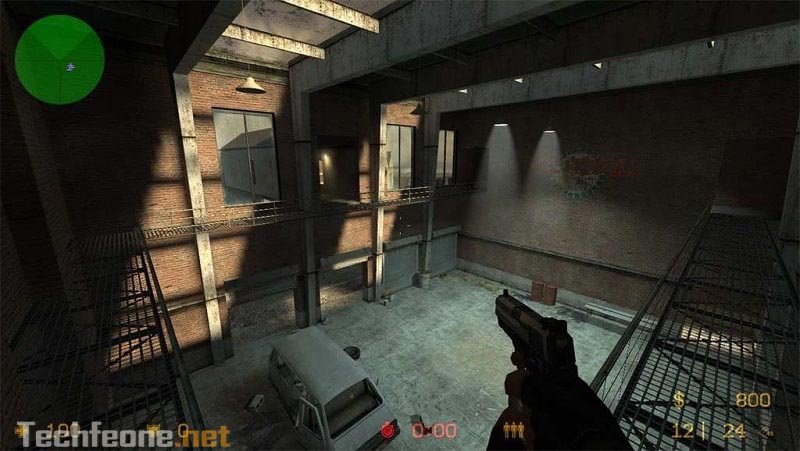
System Requirements for Windows PC
Minimum System Requirements:
- Operating System: Windows 7 (32/64-bit) or later
- Processor: 1.7 GHz Processor
- Memory: 512 MB RAM
- Graphics: DirectX 8.1 level Graphics Card (Requires support for SSE)
- DirectX: Version 8.1
- Network: Broadband Internet connection
- Storage: 15 GB available space
Recommended System Requirements:
- Operating System: Windows 7 (32/64-bit) or later
- Processor: Pentium 4 processor (3.0GHz, or better)
- Memory: 1 GB RAM
- Graphics: DirectX 9 level Graphics Card
- DirectX: Version 9.0c
- Network: Broadband Internet connection
- Storage: 15 GB available space
Technical Setup Details
- Full Name: Counter-Strike: Source
- File Name: Counter-Strike.Source.Incl.Multiplayer_game9v.com.zip
- File Size: 2.60 GB
- Setup Type: Offline Installer / Full Standalone Setup
Download Counter-Strike Source for PC with a single link
Download the full settings package in a single link. Click the button below to start downloading CS Source for Windows PC
Unzip Password (if any): game9v.com
Note:
- Whenever a password is required for a packed file, it is always game9v.com
- It is strongly advised to disable any security or antivirus software before extracting or installing the game.
- Please refer to the Readme.txt for installation and usage instructions.
How to play CS Source
1. Choose Your Side: At the start of each match, you’ll need to choose whether to play as a Terrorist or a Counter-Terrorist. Each side has its own objectives, weapons, and equipment.
2. Understand the Objectives: In “Bomb Defusal” mode, Terrorists must plant a bomb at one of the designated bomb sites (A or B), while Counter-Terrorists try to prevent them or defuse any planted bombs. In “Hostage Rescue” mode, Counter-Terrorists aim to rescue hostages held by the Terrorists.
3. Buy Weapons and Equipment: Before each round starts, you can use in-game currency to buy weapons, armor, grenades, and other equipment. Balancing your spending is crucial, so consider your role in the team and the upcoming objectives.
4. Communication and Teamwork: Effective communication with your team members is key. Use voice chat or text chat to coordinate strategies, share information about enemy positions, and plan your moves.
5. Map Knowledge: Learn the maps thoroughly. Knowing the layout, bomb sites, hostage locations, and common player positions will give you a strategic advantage.
6. Aim and Shooting: Practice your aiming skills to hit your targets accurately. Master the recoil patterns of different weapons to control your shots. Headshots deal the most damage, so aim for the head.
7. Movement and Positioning: Moving strategically and using cover wisely can make a significant difference. Avoid running out in the open, and crouch or go prone to reduce your visibility and increase accuracy.
8. Grenade Usage: Grenades (smoke, flashbangs, HE grenades) are essential tools. Use smoke grenades for cover, flashbangs to blind enemies, and HE grenades to deal damage.
9. Adaptability: Be ready to switch strategies based on the evolving match situation. If your initial approach isn’t working, adapt and try something new.
10. Economy Management: Economic management is crucial. Winning rounds earns your team more money, but losing consecutive rounds can lead to a limited budget. Coordinate with your team to make cost-effective decisions.
11. Watch and Learn: Watch experienced players and competitive matches to learn advanced strategies, positioning, and techniques.
12. Practice and Patience: Improvement takes time. Practice regularly, be patient with yourself, and focus on gradually refining your skills.


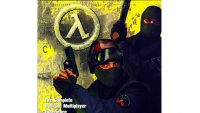
![GTA San Andreas download for Windows PC [full free]](https://techfeone.net/wp-content/uploads/2023/08/techfeone.net-Grand-Theft-Auto-GTA-San-Andreas-PC-featured-200x113.jpg)

